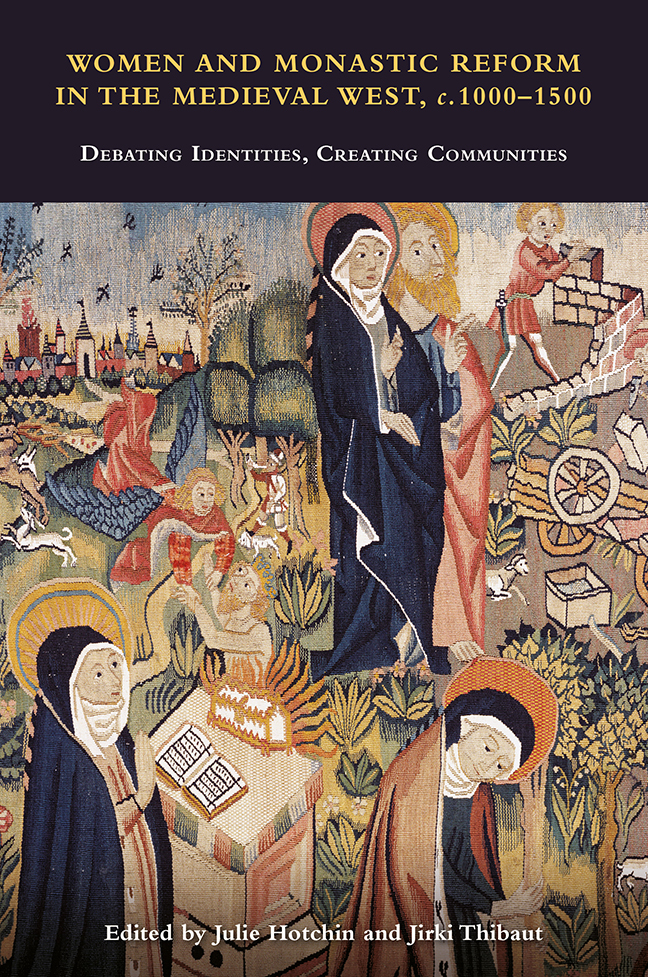 Women and Monastic Reform in the Medieval West, c.1000-1500
Women and Monastic Reform in the Medieval West, c.1000-1500 Furnishing the church with textiles to mark liturgical feasts performed various commemorative, representative and identity functions for religious communities and patrons. Spiritually, they served as a metaphor for different kinds of spiritual adornment. Liturgical textiles dressed the church as Ecclesia, the bride of Christ, and provided visual imagery to focus and direct the meditation of the women and men who viewed them. Women, in particular, commissioned, donated or made liturgical textiles to clothe priests and dress the altars of their church, through which they claimed a female presence in the celebration of the Christian liturgy. From the tenth century women are also occasionally recorded as picturing themselves – or being pictured – prominently in textile imagery and other media as participants in these stories of sacred history. By projecting themselves into key scenes in sacred history, women expressed their relationship with Christ, chiefly at the Cross and the Tomb, and by extension with the men who supported their religious life. Liturgical textiles can yield evidence of how male and female members of a community expressed collective identities and devotional concerns. Examining these textiles, therefore, offers an alternate perspective from which to consider questions of gender, women's spiritual roles and their relations with the men who were responsible for their spiritual care.
This chapter examines a fragment of figural embroidery, now preserved in the Kunstgewerbemuseum in Berlin (Inv. No. 1888,470), as evidence of how women and men in religious life imagined gender roles in northern Germany in the later twelfth century (Fig. 5.1). The central scenes of the fragment depict two images of the Resurrection and Pentecost, with a border on two sides comprising figures of male saints and clerics. Female figures feature prominently in the textile's visual narrative of sacred history: three women are shown at the Tomb on Easter morning, the Virgin is seated among the apostles, and two nuns, arms outstretched in veneration, are embedded into the scenes of the Resurrection. Largely overlooked in the scholarly literature on this embroidered fragment, these embedded female devotional figures are one of the earliest, if not the earliest, examples of women religious depicted on an extant textile. Positioned as witnesses to the events unfolding before them, these female figures make striking claims for women's presence in sacred history and in the celebration of the liturgy at the centre of this unknown community's life.
To save this book to your Kindle, first ensure [email protected] is added to your Approved Personal Document E-mail List under your Personal Document Settings on the Manage Your Content and Devices page of your Amazon account. Then enter the ‘name’ part of your Kindle email address below. Find out more about saving to your Kindle.
Note you can select to save to either the @free.kindle.com or @kindle.com variations. ‘@free.kindle.com’ emails are free but can only be saved to your device when it is connected to wi-fi. ‘@kindle.com’ emails can be delivered even when you are not connected to wi-fi, but note that service fees apply.
Find out more about the Kindle Personal Document Service.
To save content items to your account, please confirm that you agree to abide by our usage policies. If this is the first time you use this feature, you will be asked to authorise Cambridge Core to connect with your account. Find out more about saving content to Dropbox.
To save content items to your account, please confirm that you agree to abide by our usage policies. If this is the first time you use this feature, you will be asked to authorise Cambridge Core to connect with your account. Find out more about saving content to Google Drive.